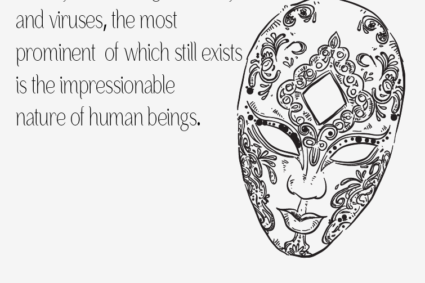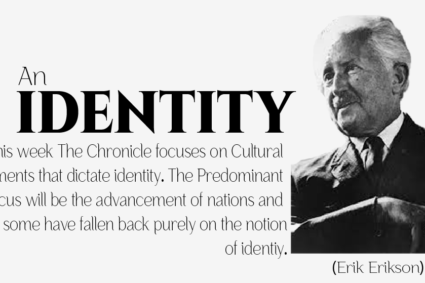
We have seen how immigrant families behave abroad, there are two extremes to the situations with almost a non-existent middle ground. One extreme leans towards higher education and white-collar jobs, the other extreme is where our “Desi Boys” decide to become part of the Hip Hop culture and take an overwhelming keen interest in Gang culture. As much as it may seem like a generalization, the influence of “hood” and “ghetto” culture is very prevalent for most South Asian youths. The confusion arises from all the cultures available in newfound homes for families, Why is the culture of hip-hop and “gang” mentality so prevalent?
When a study was being done on the gang culture in California they had deciphered that it was a sociological and natural issue of belonging to a creed or cult. The root of it was based on immigrant families. Gang mentality arises when new families in areas do not intermingle or mix with hosting nations. It is the nature of humans to find themselves part of a society or some sort of organization to continue operating on a day-to-day basis. Gang culture provided that very forum. The Gang culture consists of equivalent hierarchies to that of a military organization, where the Dons are referred to as Commanders and Generals, and the new recruits as Foot Soldiers. This culture prevailed predominantly due to the lack of acceptance within immigrant families to the stringent laws based on them. Fear, togetherness, and rebellion against the norms are all factors for the rise and growth of gang culture.
Where do Desi Boys fix themselves into this conundrum? South Asian immigrants, the majority of whom, went abroad on the basis of blue-collar jobs. Construction, shopkeepers, petrol station managers, and so on. The salaries were lower, thus they were all constructed to join neighborhoods where most immigrant families were based. White hooliganism towards one race or the other led to many young youths falling prey to gang culture, as a form of protection of themselves. This continues to grow as respect is ascertained within this culture and its hierarchy, when in actuality fear is the root of this respect. This in turn leads them to believe themselves to be of a higher cause and power, as working in construction and managing a corner store did not garner that sort of honor.
Another factor that has culminated in such thought processes is the passing of exaggerated tales of battles and wars. Even wrongly associating castes with certain families has led them to believe themselves to be wiser and more fierce in comparison. For example, some families will openly exaggerate their tales of belonging to powerful warriors of yesteryears when in actuality no such lineage can be proven, nor does it owe them any favors. This leads a youthful and impressionable chap to accept his fate to be of a greater being, leading him/her to take on tasks unnecessary and an ego larger than life, causing a growth spurt to the culture of hooliganism.
When South Asian families adopted this culture from the African migrants, as they mixed themselves in immigrant communities, the culture prevailed and separated into minor gang cultures, it was their identity, whilst losing theirs on the boat to new shores. The thoughts of others were adopted by South Asians, leading them to pass them on to new families that came into their neighborhoods and people of similar descent and/or beliefs.
The other extreme, and a more reasonable one, is the severe pressure on education and jobs. Muslim communities strengthened by belief and Indian communities strengthened by a work ethic, surpassed these conformist norms and developed their own identities. These individuals went on to prosper professionally and mixed well without hesitation with the local cultures. Much of this is owed to where and how they obtained their education, if you could afford to live in a neighborhood not prevalent in negative stereotypes, you were most likely to pursue tertiary education and land a good office job later on in life.
The conundrum exists even today, however, Indian families have succeeded in achieving the feat of straying away from negative stereotypes and building an extremely positive reputation of hard workers, and efficient and reliable co-habitants. Muslim communities have too many factors interrupting their growth, especially the Pakistani community. The Bangladeshis as well, seek to adopt a more positive culture in hosting nations and develop an understanding of where they come from and where they wish to go. The Pakistani community is constantly in a battle of three struggling groups, the Shi’a group which focuses purely on their religious belief and sees everything lesser than that. The hooligan group which has adopted the negative gang culture, their own way of sticking to their roots, and the Mosque culture, where the leader of a Mosque dictates what a virtuous living is. Other migrant groups are successfully submerged in hosting nations due to similar values in religion, however, minorities of substantially different belief systems develop a streak of ethnocentrism and are separated from the norms of foreign nations.
Is there a solution to this? Setting yourself apart from all that is wrong is bound by many different factors. The family’s job and work hours, their neighborhood, and surrounding schools. The type of students you meet at certain schools, and the friendships people garner over their lifetimes. The effect of economic realities on minimum wage households, and much more. The solution for families in downtrodden areas is simple, force it or create a discipline around it, where education surpasses all. The benefit of the fruits of education can only be visible in the virtue of patience. The conundrum in itself has diminished due to gang culture’s appeal failing with the advent of new streams of income and fame, that being social media. Thus, it boils down to an unfavorable question, Why follow the ways of others? A war against oneself is the war against conformity, and it can only be won when one has a support mechanism and a toolset of skills to prosper in difficult times.



















